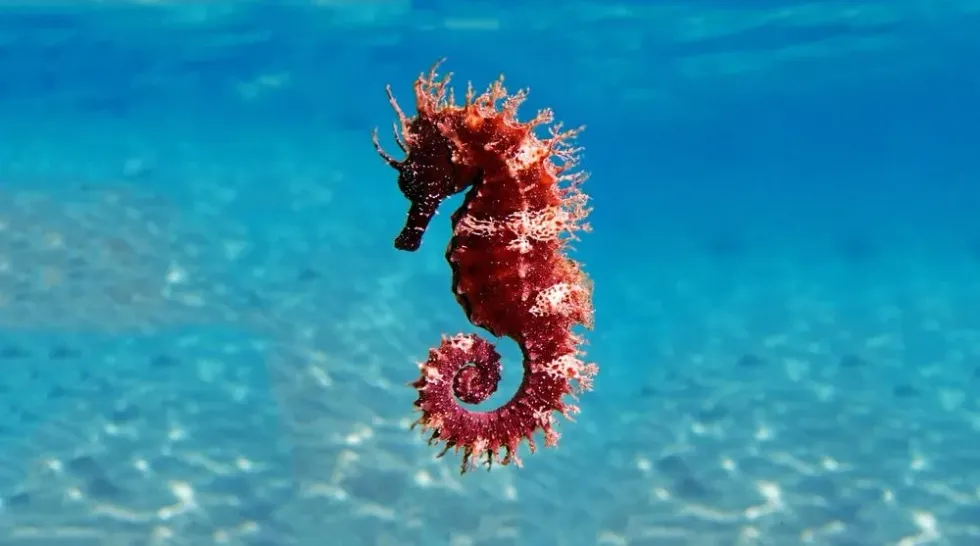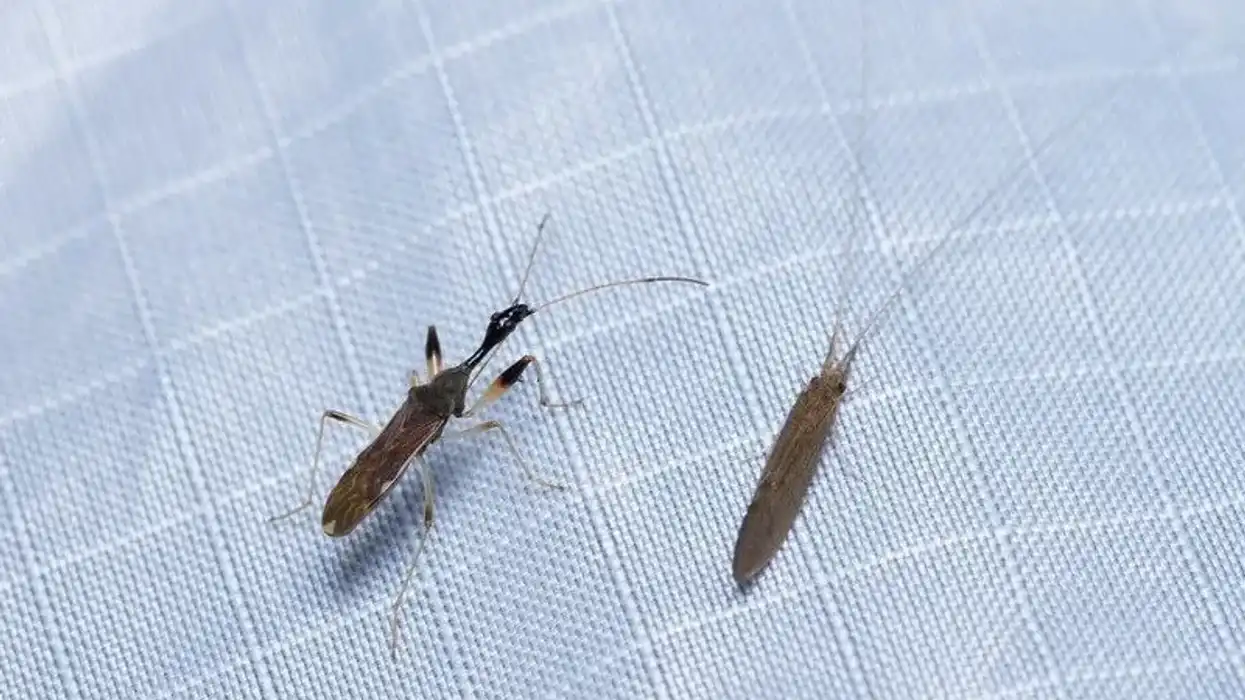Today let's explore the long-snouted seahorse, also known as a spiny seahorse in Britain. Its common names include Hippocampus guttulatus, Hippocampus longirostris, Hippocampus ramulosus, Hippocampus bicuspids, and Hippocampus filamentosus.
Are you wondering where to explore them? They are mainly found in shallow coastal seas on the south coast of the United Kingdom, but during the winter it is possible that the fish may migrate to deeper waters.
But, these species may be difficult to spot in the environment because they are camouflaged in seagrass, and spines on their bodies help them blend perfectly in with their surroundings.
The long-snouted seahorse is a prominent species in the aquarium and one of the most exported Brazilian marine ornamental fish. Furthermore, it is often harvested for traditional medicine, as souvenirs, and for religious purposes.
Interesting right? Continue reading to learn more about this rare seahorse species. Also, check out channel catfish facts and freshwater drum facts for more exciting facts.
Long-Snouted Seahorse Interesting Facts
What type of animal is a long-snouted seahorse?
A long-snouted seahorse (Hippocampus guttulatus) is a small marine fish from the family - Syngnathidae. It is frequently confused with a similar species of its family, the long snout seahorse (Hippocampus reidi), also known as slender seahorse, which has nearly identical names.
What class of animal does a long-snouted seahorse belong to?
The long-snouted seahorse (Hippocampus guttulatus) common names include spiny seahorse belongs to the Actinopterygii class, family-Syngnathidae, and genus-Hippocampus.
How many long-snouted seahorses are there in the world?
The exact number of long-snouted seahorses worldwide is yet to be discovered. However, these species are quite rare, and their volume is affected by trade for traditional Chinese medicine and the aquarium.
Where does a long-snouted seahorse live?
You can find these seahorses along the shallow coastal waters ranging from 3.2-65.6 ft (1-20 m) deep. They are frequently found hiding near Posidonia and eelgrass meadows or mixed habitats with a sandy bottom and algae-covered rocks.
What is a long-snouted seahorse's habitat?
The long-snouted seahorses are mostly found throughout the temperate seas of the Atlantic Ocean, along the south coast of the United Kingdom from the British Isles till the Netherlands and in the south till Morocco, along with the Canary Islands, the Azores, and Madeira, as well as the Mediterranean Sea.
If you cannot visit these locations to explore them, they can also be cultivated through aquaculture in aquariums.
Who does a long-snouted seahorse live with?
These long-snouted seahorses live in a small group of their own.
How long does a long-snouted seahorse live?
These long-snouted seahorses live for one to four years in the wild. If kept in good health, they have been recorded to live up to four years in captivity. Because of their camouflage and bony-plated body, they have few predators, but humans catch them for the aquarium trade or traditional medicine.
How do they reproduce?
Long snouted seahorse reproduction methods have complex courtship and bonding rituals. They are ovoviviparous, with the male brooding the eggs in the ventral brood pouch.
When they mate, female seahorse deposits up to 1,500 eggs in the male's brood pouch, these eggs are incubated in the male's pouch for four to five weeks.
During this period, the male's brood pouch has capillary-rich villi surrounding each fertilized egg, providing a sort of placenta that feeds the embryos. When babies grow up to about 0.62 in (15.7 mm), they will be released from the pocket and a hundred tiny seahorses left to survive independently.
What is their conservation status?
According to the IUCN Red List of Threatened Species status, long-snouted seahorses are classified as Data Deficient as they are quite rare, and there is inadequate data on their population. It is also registered in CITES Appendix II, which means that these species are banned from trafficking in order to prevent habitat destruction.
Long-Snouted Seahorse Fun Facts
What do long-snouted seahorses look like?

It has a slender body, prehensile tail, whereas its snout is long. Its head and dorsal ridge frequently include some large and multiple dermal filaments that can be simple or divided.
There are no skin appendages in most seahorses, but the long snouted seahorse is covered in bony plate rings. Its color ranges from brown to yellow, including dark green, red, orange, and the body is covered with numerous tiny white dots, primarily on the tail.
How cute are they?
When we come across these tiny long-snouted seahorses in the deep sea with bright colors that differ from brown to yellow, the body is covered with white dots throughout, with more numerous on their tail will indeed look adorable.
How do they communicate?
They communicate through visuals, sound, and touch, just like other seahorses.
How big is a long-snouted seahorse?
The long snouted seahorse, or spiny seahorse, is a tiny fish with an average length of 4.7 in (12 cm) but can grow to a maximum of 8.5 in (21.5 cm).
How fast can a long-snouted seahorse move?
These seahorses are known to be bad swimmers. This is because they rely on their dorsal fin, which beats at a rate of 30-70 times per second, to drive them forward. On the other hand, pectoral fins on both sides of the head aid in stability and steering.
How much does a long-snouted seahorse weigh?
The exact weight of this spiny seahorse is unexplored. However, a seahorse typically weighs between 7-16 oz (198.4 -453.5 g).
What are the male and female names of the species?
Male and female long snouted seahorses have no distinct names. A male species is known as a male long snouted seahorse, and a female species is known as a female long snouted seahorse.
What would you call a baby long-snouted seahorse?
The baby of the long-snouted seahorse is known as fry or simply long-snouted seahorse babies.
What do they eat?
The seahorse has a tiny mouth and feeds on zooplankton using its pipette-shaped mouth. The long-snouted seahorse diet includes small crustacean larvae, shrimp, and fish eggs. This species approaches its victim slowly and uses its distinct jaw, which is long and perpendicular to the body, to create the lethal suction movement at the end minute.
Did you know that yellowfin tuna, crabs, bigger fish, bluefin, and rays frequently prey on seahorses?
Are they poisonous?
There is no evidence published that these seahorses are poisonous to human life. However, researchers believe that increased trafficking in seahorses is being driven by Chinese demand since they are regarded in traditional Chinese medicine as a source of strength and heal various disorders such as asthma, sleeplessness, and heart disease.
Seahorses are frequently dried and powdered into a powder, which some people add to rice wine, tea, or soup.
Would they make a good pet?
If you want to keep these seahorses as a pet, keep in mind that they are difficult to care for. They require substantial saltwater aquariums, usually larger than 30 gallons (136.3 L), and it has been observed that less than 1% of collected seahorses survive for more than six weeks.
As a result, only skilled enthusiasts keep them as pets. Furthermore, they must be kept in their natural habitats like the northeast Atlantic since they perform best in large groups in marine life.
Did you know...
According to the data estimated by Project Seahorse, fewer than 0.5 % of newborn seahorses survive to adulthood.
One of the amazing facts about seahorses is that by imitating the color of underwater vegetation, seahorses swim upright and evade predators.
Why do seahorses have long snouts?
These seahorses do not have teeth, but they do have a long snout that allows them to reach into nooks and crevices, searching for food. When these seahorses come to their diet range, they suck it up with their snouts creating a vacuum.
If their prey is greater than the snout, their snouts might expand. As these seahorses do not have teeth to chew food, food is swallowed whole, quickly passing through the digestive system.
How many different types of seahorses exist?
There are about 46 identified species of seahorse found in all saltwater types around the world. However, the ability of seahorses to change color and shape and merge with their surroundings makes identifying individual species difficult.
As a result, some experts previously believed there must have been up to 200 seahorse species globally, while others claimed there were not more than 20 species.
However, thanks to progressions in genetic studies helped to clarify some of the differences between closely related species. Let's explore few interesting facts: We'll start with the dwarf seahorse, which is the world's slowest fish, reaching a maximum length of about 1.9 in (4.8 cm).
One of the tiniest seahorses is the pygmy seahorse, measuring only 0.94 in (2.3 cm) in length, while the big-bellied seahorse is the largest.
Seahorses are named after the animals they resemble, such as the tiger tail seahorse, which has tiger-like striping on its body. Likewise, the zebra seahorse, which has black and white stripes, looks like a zebra.
Here at Kidadl, we have carefully created lots of interesting family-friendly animal facts for everyone to discover! For more relatable content, check out these guppy facts and tang fish fun facts for kids.
You can even occupy yourself at home by coloring in one of our free printable seahorse coloring pages.










